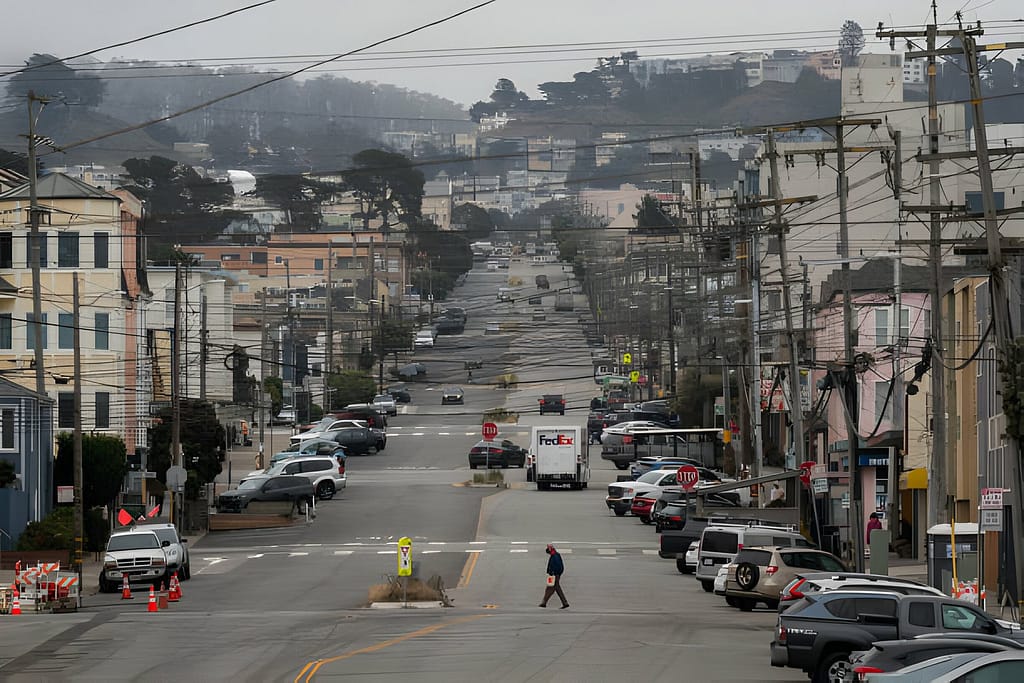A newly released United States Geological Survey (USGS) map reveals that nearly all of California faces a more than 95% chance of experiencing a damaging earthquake in the next century. The comprehensive USGS National Seismic Hazard Model, updated from its 2018 version, provides insights into the seismic risk across the United States. This article explores key findings from the map, emphasizing the widespread hazard, structural implications, and the collaborative effort involved in its creation.
Table of Contents
Key Takeaways from the USGS Map
The USGS National Seismic Hazard Model underscores that almost 75% of the U.S. population could encounter potentially damaging earthquakes and intense ground shaking, exposing hundreds of millions of people to seismic risk. The model, a result of a massive collaborative effort involving federal, state, and local entities, offers critical insights for architects, engineers, and policymakers, guiding future building and structural design decisions.
Widespread Hazard and Seismic History
The map reveals that 37 U.S. states have witnessed earthquakes exceeding magnitude 5 over the last 200 years, emphasizing the nation’s long history of seismic activity. The seismic risk is not limited to specific regions, reinforcing the need for a unified approach to earthquake preparedness and response.

Structural Implications and Design Considerations
One of the significant outcomes of the updated model is its potential impact on building and structural design. Architects, engineers, and policymakers can leverage the insights provided by the model to inform future construction plans. The map serves as a crucial tool in understanding the seismic landscape and enhancing public safety through improved building practices.
Collaborative Effort and Unified Approach
This marks the first National Seismic Hazard Model to encompass all 50 states simultaneously, highlighting a groundbreaking collaboration between federal, state, and local partners. The comprehensive nature of the model reflects the dedication to a unified approach in addressing seismic risks across the entire country.
Understanding the Nature of Earthquakes
While the model does not predict earthquakes, it relies on historical data, seismic studies, and ground shaking assessments to forecast areas where earthquakes are more likely to occur. Scientists emphasize the challenges associated with earthquake prediction, citing the lack of a definitive pattern and the complex nature of tectonic plate movements.
Noteworthy Changes and Regional Vulnerabilities
The updated map reveals noteworthy changes, particularly along the Atlantic Coastal corridor, encompassing major cities like Washington D.C, New York, Boston, and Philadelphia. These areas are now recognized as having the potential for damaging earthquakes. Additionally, Alaska, Hawaii, and certain regions along the Atlantic and Pacific coasts show a “greater potential for shaking” than previously forecasted.
Preparing for Future Earthquakes
The primary purpose of the map is to identify areas at risk of potentially damaging earthquakes, aiding in preparedness efforts. With 37 states experiencing magnitude 5 earthquakes in the last two centuries, it becomes imperative for susceptible regions to consider seismic risk in future building projects. California, with its seismic history, has already implemented earthquake-resistant measures, though older structures remain vulnerable.
Challenges in Earthquake Prediction
Earthquake prediction remains a challenging endeavor, as highlighted by scientists. While certain fault systems exhibit higher stress levels, predicting when a significant earthquake may occur remains elusive. Scientists emphasize a shift toward earthquake forecasting, utilizing models to assess the likelihood, frequency, and magnitudes of potential earthquakes.
The USGS map serves as a comprehensive tool to raise awareness about seismic risks across the United States. As the nation grapples with the potential for damaging earthquakes, the collaborative effort behind the model emphasizes the importance of a unified approach to earthquake preparedness. The insights provided by the map offer valuable guidance for building resilient structures, enhancing public safety, and fostering informed decision-making in the face of seismic challenges.